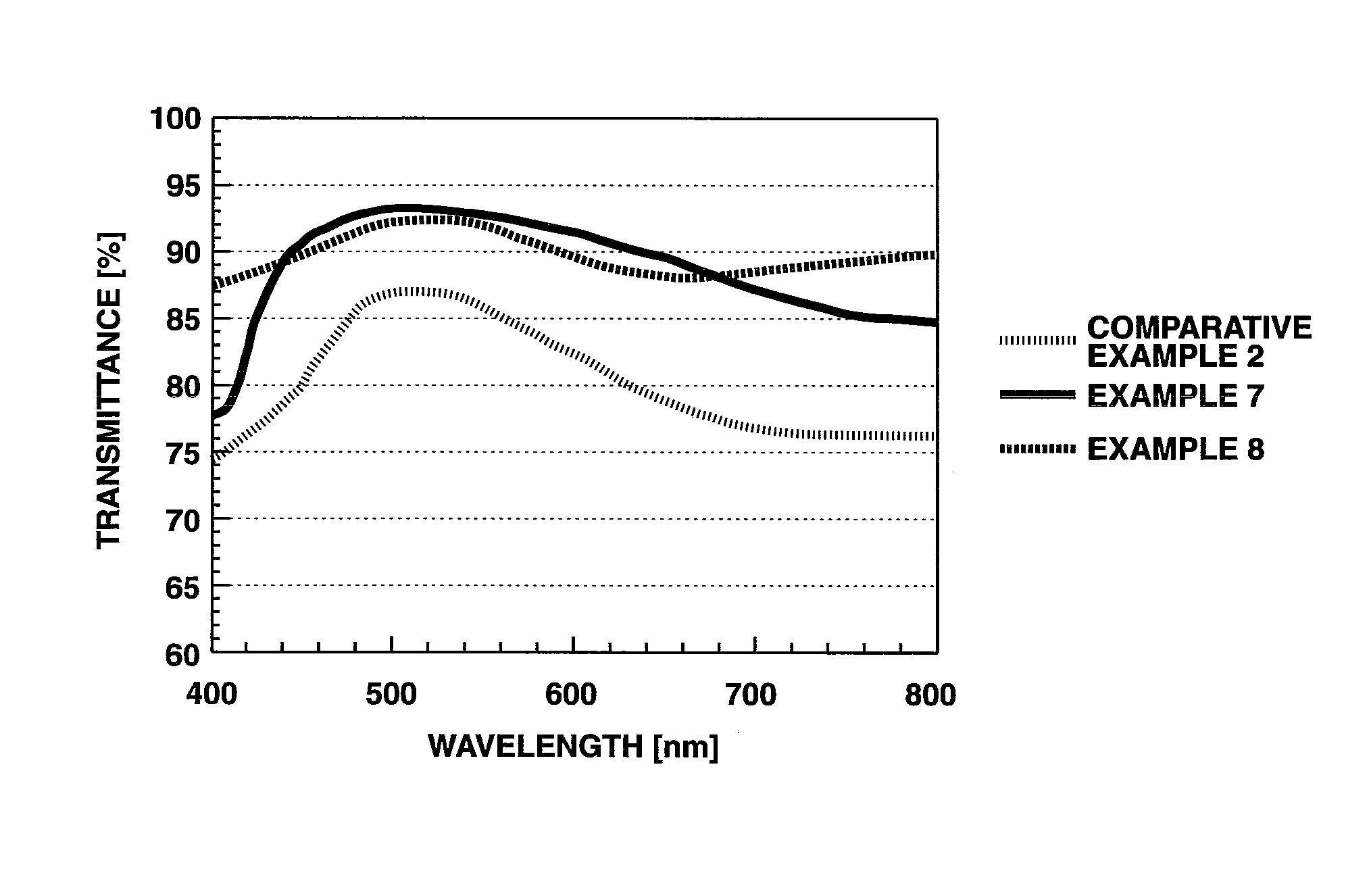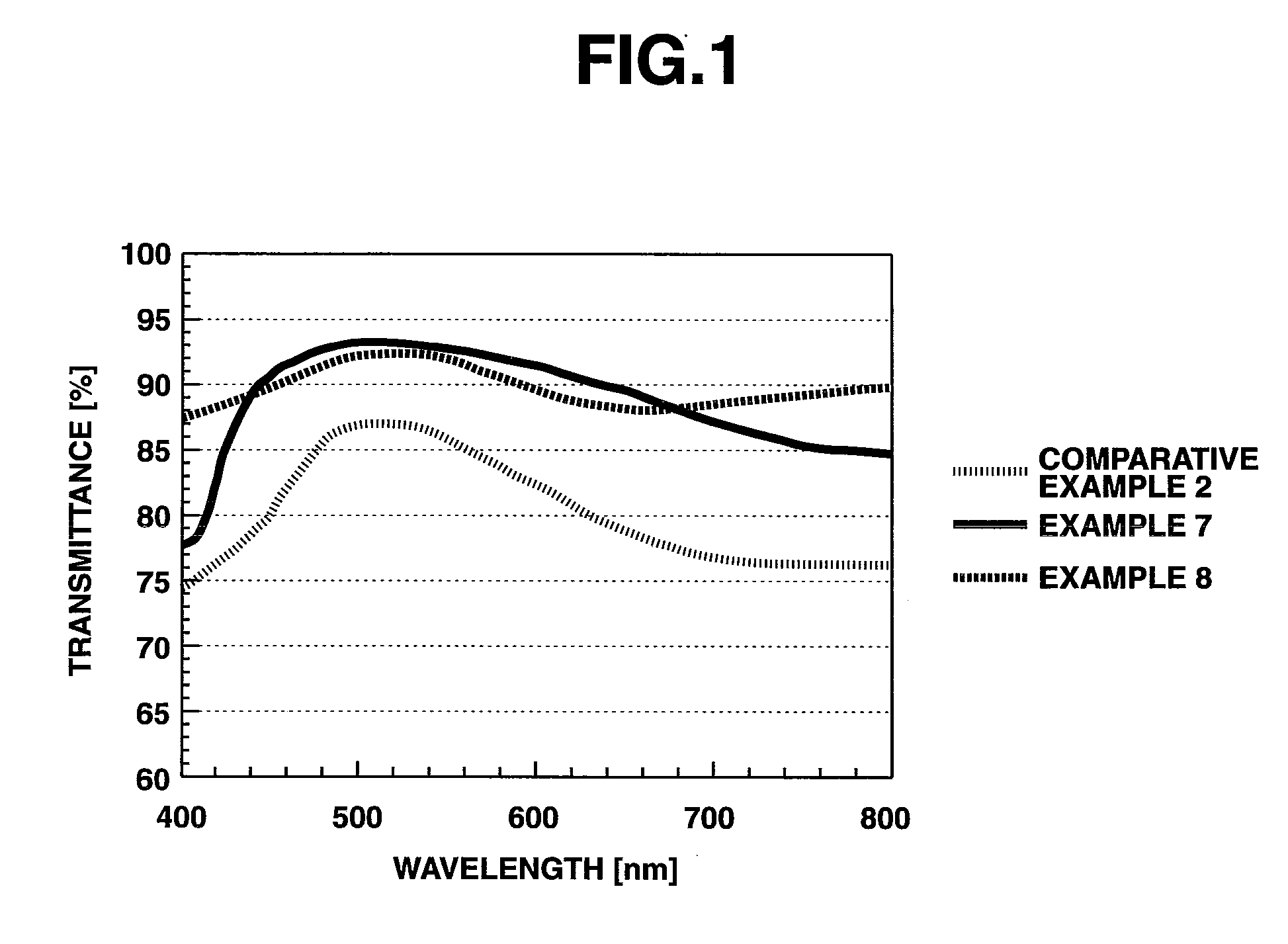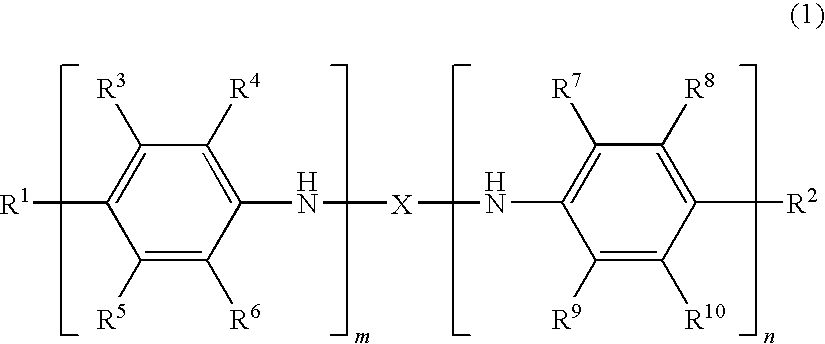Oligoaniline compounds
a technology of oligoaniline and compound, which is applied in the field of oligoaniline compound, can solve the problems of affecting the stable manufacture of organic el devices, and achieve the effects of reducing the amount of organic el
- Summary
- Abstract
- Description
- Claims
- Application Information
AI Technical Summary
Benefits of technology
Problems solved by technology
Method used
Image
Examples
example 1
[0103]Bis(4-diphenylamino)-4,4′-diaminodiphenylmethane (hereinafter abbreviated as BDDM) represented by the formula (32) was prepared from p-hydroxydiphenylamine and 4,4′-diaminodiphenylmethane according to the following procedure (white solid, yield of 60%).
[0104]In 1 liter of toluene, 9.913 g (0.05 mols) of 4,4′-diaminodiphenylmethane was dissolved. To obtain a dehydrating condensation agent, 153.144 g (0.45 mols) of titanium tetra-n-butoxide and 67.5765 g (0.45 mols) of p-tolyl acetate were evaporated on a water bath of 60° C. for 60 minutes to completely distill off the resulting butyl acetate. This agent was added to the solution.
[0105]While keeping the reaction solution at 110° C., 22.2264 g (0.12 mols) of p-hydroxydiphenylamine was added to the solution under nitrogen atmosphere, followed by reaction at the temperature for 48 hours under nitrogen atmosphere. After completion of the reaction, the reaction solution, cooled down to room temperature, was filtered and the resultin...
example 2
[0107]Bis(4-diphenylamino)-4,4′-diaminodiphenyl ether (hereinafter abbreviated as BDDE) represented by the formula (33) was prepared from p-hydroxydiphenylamine and 4,4′-diaminodiphenyl ether according to the following procedure (white solid, yield of 89%).
[0108]In 1 liter of toluene, 10.012 g (0.05 mols) of 4,4′-diaminodiphenylether was dissolved. To obtain a dehydrating condensation agent, 153.144 g (0.45 mols) of titanium tetra-n-butoxide and 67.5765 g (0.45 mols) of p-tolyl acetate were evaporated on a water bath of 60° C. for 60 minutes to completely distill off the resulting butyl acetate. This agent was added to the solution.
[0109]While keeping the reaction solution at 110° C., 22.2264 g (0.12 mols) of p-hydroxydiphenylamine was added to the solution under nitrogen atmosphere, followed by reaction at the temperature for 48 hours under nitrogen atmosphere. After completion of the reaction, the reaction solution, cooled down to room temperature, was filtered and the resulting f...
example 3
[0111]Bis(4-diphenylamino)-2,2′-dimethyl-4,4′-diaminobiphenyl (hereinafter abbreviated as BDDMD) represented by the formula (34) was prepared from p-hydroxydiphenylamine and 4,4′-diaminodiphenyl ether according to the following procedure (white solid, yield of 88%).
[0112]In 1 liter of toluene, 10.6145 g (0.05 mols) of 2,2′-dimethylbenzidine was dissolved. To obtain a dehydrating condensation agent, 153.144 g (0.45 mols) of titanium tetra-n-butoxide and 67.5765 g (0.45 mols) of p-tolyl acetate were evaporated on a water bath of 60° C. for 60 minutes to completely distill off the resulting butyl acetate. This agent was added to the solution.
[0113]While keeping the reaction solution at 110° C., 22.2264 g (0.12 mols) of p-hydroxydiphenylamine was added to the solution under nitrogen atmosphere, followed by reaction at the temperature for 48 hours under nitrogen atmosphere. After completion of the reaction, the reaction solution, cooled down to room temperature, was filtered and the resu...
PUM
| Property | Measurement | Unit |
|---|---|---|
| molecular weight distribution | aaaaa | aaaaa |
| charge transport | aaaaa | aaaaa |
| charge-transporting | aaaaa | aaaaa |
Abstract
Description
Claims
Application Information
 Login to View More
Login to View More - R&D
- Intellectual Property
- Life Sciences
- Materials
- Tech Scout
- Unparalleled Data Quality
- Higher Quality Content
- 60% Fewer Hallucinations
Browse by: Latest US Patents, China's latest patents, Technical Efficacy Thesaurus, Application Domain, Technology Topic, Popular Technical Reports.
© 2025 PatSnap. All rights reserved.Legal|Privacy policy|Modern Slavery Act Transparency Statement|Sitemap|About US| Contact US: help@patsnap.com



